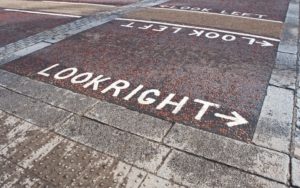I was looking at a couple of interesting maps over the past few days. First was this fascinating map depicting by color the largest religious group in each county of the united States. I’m not a particularly religious person: you could probably call me a Saganist if you have to label me. (Top definition.) Despite my own beliefs, I’m fascinated by religion and how it can influence behavior, sometimes to the point of obsession.
The other map of interest is represented on this page, which is an interactive red state blue state map. Unfortuately, the religion map has no quantification, so there’s no way to tell how the Catholicism in Los Angeles County compares to that of Milwaukee County, Dade County, or any of the other hundreds of blue counties on this map. That means you can’t really say blue counties tend to make a state vote Republican. Politics is more complicated than that, anyway. Fortunately, that’s not what I want to talk about.

What I do want to talk about is why regions of the country, enormous swaths of land like the entire west coast, tends to vote the same way. One hypothesis I’ve been pondering over the past few days is that people are not just swayed, but heavily influenced by the people around them. It starts with the family. There seem to be two outcomes here–one is the production of Mini-Me’s and the other is rebellion. But assuming a healthy relationship between parents and child, it’s fair to say the child will often adopt the political views of the parents–eventually. So there’s likely a self-perpetuating factor.
Perhaps more important once a person reaches adulthood are the circle of friends. Friends can influence opinion, and a particularly articulate friend might even cause a parson to change sides. People like to hang out with other people with similar beliefs, and I think the swaying happens over time with discussion about current events while driving to the movie theater, or while hanging out near the back yard pool.
A third factor is immersion. When a person moves into a new area, bombardment of the dominant political views is unavoidable. Sound bites from government officials, letters to the editor, and even idle chit-chat in line at the grocery store. It adds up and influences a lot of people.
Now, it’s necessary to mention that just because a state votes red doesn’t mean the blues have no influence. Over the last decade, we’ve seen claims of mandates from the people by countless politicians. Mandate would imply an overwhelming majority of the people agree, when often it’s just 51% turned into propaganda. Still, the states that voted red in the last election will usually vote red in the next election.
I don’t know if there’s any credence to the hypothesis that people’s opinions on average tend to migrate toward the dominant ideology. It’s certainly not universal, to which I can personally attest. I tend to migrate away from the dominant ideology, which probably means I’m a centrist. But I ponder these things more than the average person, I research, and I read a lot.
Still, it’s an interesting premise. It’s almost like an ideological herd mentality. Or, perhaps that’s what it really is. Political herd mentality. (Successfully squashed urge to make a comment on the current election cycle. Boo-ya!)




